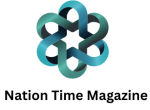The Allure of $19.99: Unveiling the Psychology Behind Pricing

In the world of commerce, pricing is an art form that goes beyond mere numbers; it delves into the intricate realm of human psychology. Among the myriad of price points, $19.99 holds a special place. It’s a price tag that has become ubiquitous, gracing products ranging from clothing to electronics. But what is the allure of $19.99? Why does this particular price point seem to have a magical effect on consumers? In this article, we explore the psychology behind the charm of $19.99 and its widespread use in the retail landscape.
The Psychology of Pricing
Understanding the psychology of pricing is crucial for businesses seeking to maximize their sales. Consumers don’t always make rational decisions; instead, their choices are often influenced by psychological factors. One such factor is the left-digit effect, a cognitive bias where consumers focus on the leftmost digit of a price. In the case of $19.99, the leftmost digit is 1, creating the illusion that the price is significantly lower than $20. This perception can be a powerful motivator for consumers to make a purchase.
The Charm of “Just Under”
The pricing strategy of setting a product at $19.99 instead of $20 is rooted in the belief that consumers perceive prices just under a round number as more attractive. The difference of a single cent seems negligible, but it can have a substantial impact on consumer behavior. Retailers have long recognized that $19.99 appears significantly more affordable than $20, even though the actual difference is minimal.
The Magic of Nine
The use of the digit 9 in pricing, known as “charm pricing,” is a well-established marketing tactic. Numerous studies have shown that prices ending in .99 are more appealing to consumers than rounded prices. The theory behind this phenomenon is that the brain perceives the price as a better deal, even when the difference is just a single cent. Therefore, $19.99 triggers a positive response in consumers, making them more likely to make a purchase compared to a product priced at $20.
Perceived Value
The pricing of products at $19.99 also plays into the psychology of perceived value. Consumers often associate prices with the quality and value of a product. When a product is priced just under a round number, it can create the perception of a bargain without compromising perceived quality. This perceived value encourages consumers to feel that they are getting a good deal, making them more inclined to make a purchase.
Historical Perspective
The use of $19.99 as a pricing strategy has historical roots. It is believed to have originated in the early 20th century when retailers began experimenting with pricing to maximize sales. The strategy proved effective, and the practice of setting prices just under round numbers became widespread. Over the decades, $19.99 has become ingrained in retail culture, making it a default choice for many businesses.
Consumer Expectations
The prevalence of $19.99 in the retail landscape has led to a certain level of consumer expectation. Shoppers have become accustomed to seeing this price point, and businesses leverage this familiarity to their advantage. When consumers encounter a product priced at $19.99, they may subconsciously associate it with the traditional pricing model they’ve encountered throughout their shopping experiences, further reinforcing the appeal of this price point.
Pricing Perception Across Industries
The charm of $19.99 is not limited to a specific industry. It transcends sectors, appearing in everything from clothing and electronics to food and services. This universality highlights the effectiveness of the pricing strategy across diverse consumer markets. Whether it’s a piece of clothing priced at $19.99 or a tech gadget marketed at this specific price point, the psychological impact remains consistent.
Competitive Pricing
In a competitive market, pricing can be a key differentiator. The use of $19.99 allows businesses to position their products as competitively priced while still maintaining a margin. Consumers often compare prices when making purchasing decisions, and $19.99 provides a strategic advantage in this comparison. It gives the impression of affordability without sacrificing the perceived value of the product.
The Rise of E-commerce and $19.99
With the rise of e-commerce, the impact of $19.99 has extended into the digital realm. Online retailers strategically use this price point to attract customers in a crowded digital marketplace. The principles of charm pricing and the left-digit effect hold true in the virtual shopping experience, making $19.99 a go-to choice for e-commerce platforms seeking to optimize their sales.
Conclusion
In the intricate dance between consumers and retailers, pricing emerges as a powerful tool that extends beyond the realm of numbers. The allure of $19.99 is a testament to the profound influence of psychological factors on consumer behavior. From the left-digit effect to the magic of nine, this price point has become a staple in the retail landscape. As businesses continue to navigate the complex world of pricing strategy, the charm of $19.99 remains a timeless and effective tactic that transcends industries and captivates the minds of consumers.
-
Why is $19.99 such a common price point?
The $19.99 pricing strategy is rooted in psychology. It takes advantage of the left-digit effect, making consumers perceive the price as significantly lower than a rounded number, such as $20.
-
What is the left-digit effect, and how does it influence purchasing decisions?
The left-digit effect is a cognitive bias where consumers focus on the leftmost digit of a price. In the case of $19.99, the emphasis on ‘1’ creates the illusion of a lower price, impacting consumer behavior and making them more likely to make a purchase.
-
Why is $19.99 often considered more attractive than a rounded number like $20?
The charm of $19.99 lies in the psychological pricing strategy known as “charm pricing.” Consumers tend to perceive prices ending in .99 as more attractive and affordable, even when the actual difference is just one cent.
-
Does the use of $19.99 affect consumer perceptions of product quality?
Yes, the pricing of products at $19.99 plays into the psychology of perceived value. Consumers often associate this price point with a good deal without compromising the perceived quality of the product.
-
Is the $19.99 pricing strategy a recent phenomenon?
No, the use of $19.99 in pricing has historical roots dating back to the early 20th century. Retailers began experimenting with pricing to maximize sales, and the strategy proved effective, becoming a widespread practice over the decades.
-
Does the prevalence of $19.99 create consumer expectations?
Yes, the widespread use of $19.99 has led to a certain level of consumer expectation. Shoppers are accustomed to encountering this price point, and businesses leverage this familiarity to enhance the appeal of their products.
-
Is $19.99 effective across different industries?
Yes, the charm of $19.99 is not limited to a specific industry. It is a pricing strategy that transcends sectors, appearing in various products and services, showcasing its effectiveness across diverse consumer markets.
-
How does $19.99 impact competitive pricing in the market?
In a competitive market, $19.99 serves as a strategic pricing point. Businesses can position their products as competitively priced while still maintaining a margin. The price point aids in attracting consumers by giving the impression of affordability without sacrificing perceived value.
-
Has the rise of e-commerce influenced the use of $19.99?
Yes, the impact of $19.99 has extended into the digital realm with the rise of e-commerce. Online retailers strategically use this price point to attract customers in a crowded digital marketplace, applying the principles of charm pricing and the left-digit effect to optimize sales.
-
Is $19.99 a timeless pricing strategy?
Yes, the charm of $19.99 remains a timeless and effective tactic in the world of retail. Its enduring popularity reflects its ability to captivate the minds of consumers and influence their purchasing decisions across various industries
-
Why is $19.99 such a common price point?
The $19.99 pricing strategy is rooted in psychology. It takes advantage of the left-digit effect, making consumers perceive the price as significantly lower than a rounded number, such as $20.
-
What is the left-digit effect, and how does it influence purchasing decisions?
The left-digit effect is a cognitive bias where consumers focus on the leftmost digit of a price. In the case of $19.99, the emphasis on ‘1’ creates the illusion of a lower price, impacting consumer behavior and making them more likely to make a purchase.
-
Why is $19.99 often considered more attractive than a rounded number like $20?
The charm of $19.99 lies in the psychological pricing strategy known as “charm pricing.” Consumers tend to perceive prices ending in .99 as more attractive and affordable, even when the actual difference is just one cent.
-
Does the use of $19.99 affect consumer perceptions of product quality?
Yes, the pricing of products at $19.99 plays into the psychology of perceived value. Consumers often associate this price point with a good deal without compromising the perceived quality of the product.
-
Is the $19.99 pricing strategy a recent phenomenon?
No, the use of $19.99 in pricing has historical roots dating back to the early 20th century. Retailers began experimenting with pricing to maximize sales, and the strategy proved effective, becoming a widespread practice over the decades.
-
Does the prevalence of $19.99 create consumer expectations?
Yes, the widespread use of $19.99 has led to a certain level of consumer expectation. Shoppers are accustomed to encountering this price point, and businesses leverage this familiarity to enhance the appeal of their products.
-
Is $19.99 effective across different industries?
Yes, the charm of $19.99 is not limited to a specific industry. It is a pricing strategy that transcends sectors, appearing in various products and services, showcasing its effectiveness across diverse consumer markets.
-
How does $19.99 impact competitive pricing in the market?
In a competitive market, $19.99 serves as a strategic pricing point. Businesses can position their products as competitively priced while still maintaining a margin. The price point aids in attracting consumers by giving the impression of affordability without sacrificing perceived value.
-
Has the rise of e-commerce influenced the use of $19.99?
Yes, the impact of $19.99 has extended into the digital realm with the rise of e-commerce. Online retailers strategically use this price point to attract customers in a crowded digital marketplace, applying the principles of charm pricing and the left-digit effect to optimize sales.
-
-
Why is $19.99 such a common price point?
The $19.99 pricing strategy is rooted in psychology. It takes advantage of the left-digit effect, making consumers perceive the price as significantly lower than a rounded number, such as $20.
-
What is the left-digit effect, and how does it influence purchasing decisions?
The left-digit effect is a cognitive bias where consumers focus on the leftmost digit of a price. In the case of $19.99, the emphasis on ‘1’ creates the illusion of a lower price, impacting consumer behavior and making them more likely to make a purchase.
-
Why is $19.99 often considered more attractive than a rounded number like $20?
The charm of $19.99 lies in the psychological pricing strategy known as “charm pricing.” Consumers tend to perceive prices ending in .99 as more attractive and affordable, even when the actual difference is just one cent.
-
Does the use of $19.99 affect consumer perceptions of product quality?
Yes, the pricing of products at $19.99 plays into the psychology of perceived value. Consumers often associate this price point with a good deal without compromising the perceived quality of the product.
-
Is the $19.99 pricing strategy a recent phenomenon?
No, the use of $19.99 in pricing has historical roots dating back to the early 20th century. Retailers began experimenting with pricing to maximize sales, and the strategy proved effective, becoming a widespread practice over the decades.
-
Does the prevalence of $19.99 create consumer expectations?
Yes, the widespread use of $19.99 has led to a certain level of consumer expectation. Shoppers are accustomed to encountering this price point, and businesses leverage this familiarity to enhance the appeal of their products.
-
Is $19.99 effective across different industries?
Yes, the charm of $19.99 is not limited to a specific industry. It is a pricing strategy that transcends sectors, appearing in various products and services, showcasing its effectiveness across diverse consumer markets.
-
How does $19.99 impact competitive pricing in the market?
In a competitive market, $19.99 serves as a strategic pricing point. Businesses can position their products as competitively priced while still maintaining a margin. The price point aids in attracting consumers by giving the impression of affordability without sacrificing perceived value.
-
Has the rise of e-commerce influenced the use of $19.99?
Yes, the impact of $19.99 has extended into the digital realm with the rise of e-commerce. Online retailers strategically use this price point to attract customers in a crowded digital marketplace, applying the principles of charm pricing and the left-digit effect to optimize sales.
-
Is $19.99 a timeless pricing strategy?
Yes, the charm of $19.99 remains a timeless and effective tactic in the world of retail. Its enduring popularity reflects its ability to captivate the minds of consumers and influence their purchasing decisions across various industries.
Is $19.99 a timeless pricing strategy?
Yes, the charm of $19.99 remains a timeless and effective tactic in the world of retail. Its enduring popularity reflects its ability to captivate the minds of consumers and influence their purchasing decisions across various industries
-





